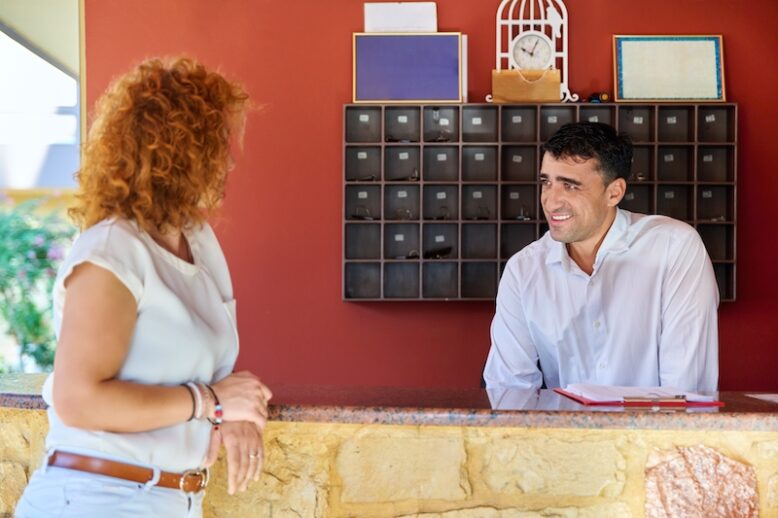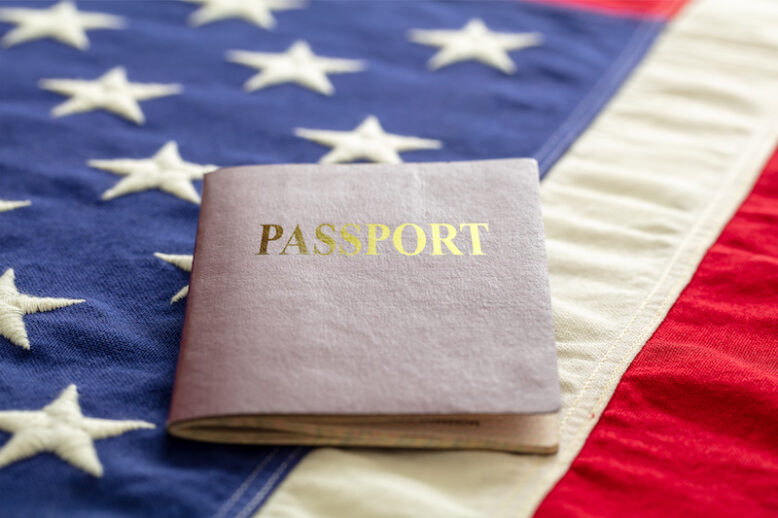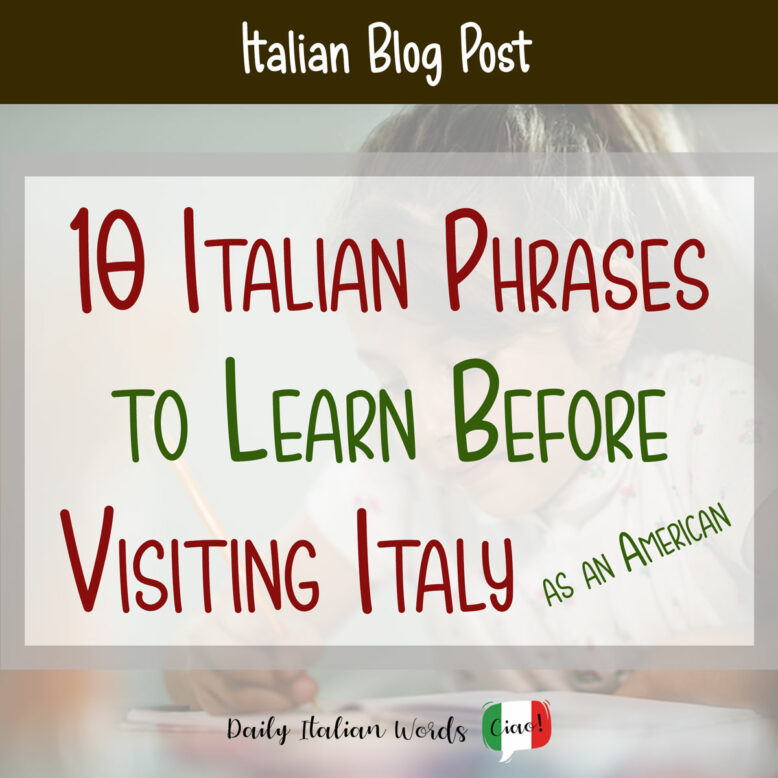Visiting Italy finds its way onto the bucket list of many Americans, and for good reason. Not only is it one of the most scenic countries in the world, but it also has a rich history spanning across thousands of years, an incredible culinary tradition, and some of the friendliest people you’ll ever meet.
If you plan to visit Italy as an American, there are a few useful phrases in Italian worth learning that differ somewhat from the standard travel phrases you’ll find in other articles aimed at tourists from all over the globe. Leaning these phrases will go a long way in showing the Italians you meet that you respect their language and culture!

1. Sono americano. / Sono americana.
The first useful phrase in Italian worth learning is also one of the most obvious.
Sono americano means “I am American” and the -o ending means it should be used by those who identify as male. The female equivalent is Sono americana with the -a ending.
Sono americano. / Sono americana.
I am American.
In English, another way you can describe your Americanness is with the phrase “I am / come from America”.
In this case, the translation would be Vengo dall’America (“I come from America”) or Vengo dagli Stati Uniti (“I come from the United States”). However, keep in mind that Italians prefer to simply state their nationality. If you do come across this phrasing, it is normally in response to the question Da dove viene? (“Where are you from?”)
Vengo dall’America.
I come from America.

2. Sono di New York.
In order to specify exactly which city you live in, you can use the phrase Sono di [city name]. Di is a preposition that means “of” so it literally means “I am of [city name]”.
Sono di New York.
I’m from New York.
But what if you want to refer to the state you reside in? Well, here is where things get a little more complicated.
All states require a definite article in Italian, so the preposition (in this case di = “of”) must match the definite article in gender and number. These merged prepositions and definite articles are called prepositional articles.
For example, California is a feminine noun preceded by the definite article la, so in our phrase, di becomes della (di + la).
Here is a full list of all the prepositional articles formed with di:
di + il = del
di + la = della
di + lo = dello
di + i = dei
di + le = delle
di + gli = degli
di + l’ = dell’
Sono del Texas.
Sono del Minnesota.
Sono dello Stato di Washington.
Sono della California.
Sono della Virginia.
Sono dell’Alabama.
Sono delle Hawaii.
Sono dell’Oregon.
Sono della Florida.
Sono del Texas.
I’m from Texas.

3. Lei parla inglese?
If your knowledge of Italian is limited to the words ciao, pizza and pasta, one of the first questions you will want to ask as an American is Lei parla inglese? which is a formal way of asking Do you speak English?
Lei parla inglese?
Do you speak English?
We’ve suggested the formal rather than the informal version of this question since, more often than not, you will be addressing total strangers. With people you don’t know well, it is always best to err on the side of caution and use formal language.
Another way of posing this question is C’è qualcuno qui che parla inglese? which means Is there someone here who speaks English? It can be useful if you are in a room full of people and wish to ask them all at once.
C’è qualcuno qui che parla inglese?
Is there someone here who speaks English?

4. Mi dispiace, non parlo italiano (molto bene).
This phrase kind of goes hand-in-hand with the previous one. Instead of asking if someone speaks English, you can simply inform them that you don’t speak any Italian.
Mi dispiace, non parlo italiano.
I’m sorry, I don’t speak Italian.
If you do happen to speak some Italian, however, you can always include the words molto bene (very well) at the end of the phrase.
Non parlo italiano molto bene.
I don’t speak Italian very well.

5. “Per favore” e “Grazie”
Learning your “pleases and thank yous” before visiting another country will always be appreciated by the locals, and Italy is no exception. And if you can get the pronunciation right, even better!
Americans tend to pronounce grazie (“thank you” in Italian) as grazii without the word-final e, and per favore (“please” in Italian) as if it were the Spanish por favor. So before you go, take some time to learn the correct pronunciation, and you can be sure to impress your new Italian friends.
Grazie
Thank you
Per favore
Please

6. Dove si trova l’ambasciata americana?
When you’re travelling, bad things can and do happen. I should know – my passport was stolen days into my two-year stay in Turin! When things take a turn for the worse, you may need to pay a visit to your closest American embassy, in which case you can ask:
Dove si trova l’ambasciata americana?
Where is the American embassy?

7. Vorrei un americano per favore.
The first time my dad came to visit me in Italy, I remember him walking into an Italian bar and confidently ordering a caffè. He was expecting a large cup of coffee, the standard kind you’d get in America and most other English speaking countries, but what he ended up with instead was a teeny-tiny espresso. I’ll never forget the look on his face!
If you want a large cup of coffee in Italy, you need to order un caffè americano (or just un americano) – otherwise the barista will automatically assume that you want an espresso. An americano is basically an espresso with added water.
Vorrei un caffè americano per favore.
I would like an American coffee please.
Also, don’t make the mistake of asking for a latte – all you’ll get is a glass of milk!

8. Quant’è in dollari?
In Italy, they use euros instead of dollars, so it is worth knowing how to ask about conversions:
- How much is that in dollars? = Quanto costa in dollari?
We can simplify all these questions by using the verb essere (to be):
Quant’è in dollari?
What is that in dollars?
Another alternative to this question is:
Quanti dollari?
How many dollars?

9. Vorrei cambiare i dollari in euro.
Despite the recent pandemic, many places in Italy still prefer cash to card. This being the case, you will probably want to have at least a few euros on hand in case of an emergency. And if you didn’t convert your American dollars beforehand, you’ll need to exchange them. The way to say this in Italian is:
Vorrei cambiare i dollari in euro.
I’d like to change my dollars to euros.

10. Sono le 14
Whereas in the United States and other English speaking countries, we tend to use the 12 hour clock in conversation, in Italy almost everyone uses the 24 hour clock when they speak.
This means that, for example, 2 p.m. would be le 14 (le quattordici) whereas 11 p.m. would be le 23 (le ventitré).
Sono le 14.
It is 2 p.m.
When they do use the 12 hour clock, they always say le 2 del pomeriggio (2 in the afternoon) or le 11 di sera (11 in the evening).

Bonus: Buongiorno / Buonasera
Let’s end off with one of the most important things you can learn as an American visiting Italy, and that’s the two formal greetings buongiorno (good day) and buonasera (good evening).
When you meet someone you don’t know for the first time, it is considered polite to use these greetings, even if their English translations seem overly formal. Buongiorno is used until around 5-6 p.m. at which time they switch over to buonasera.
Buongiorno
Good day
Buonasera
Good evening


Heather Broster is a graduate with honours in linguistics from the University of Western Ontario. She is an aspiring polyglot, proficient in English and Italian, as well as Japanese, Welsh, and French to varying degrees of fluency. Originally from Toronto, Heather has resided in various countries, notably Italy for a period of six years. Her primary focus lies in the fields of language acquisition, education, and bilingual instruction.


